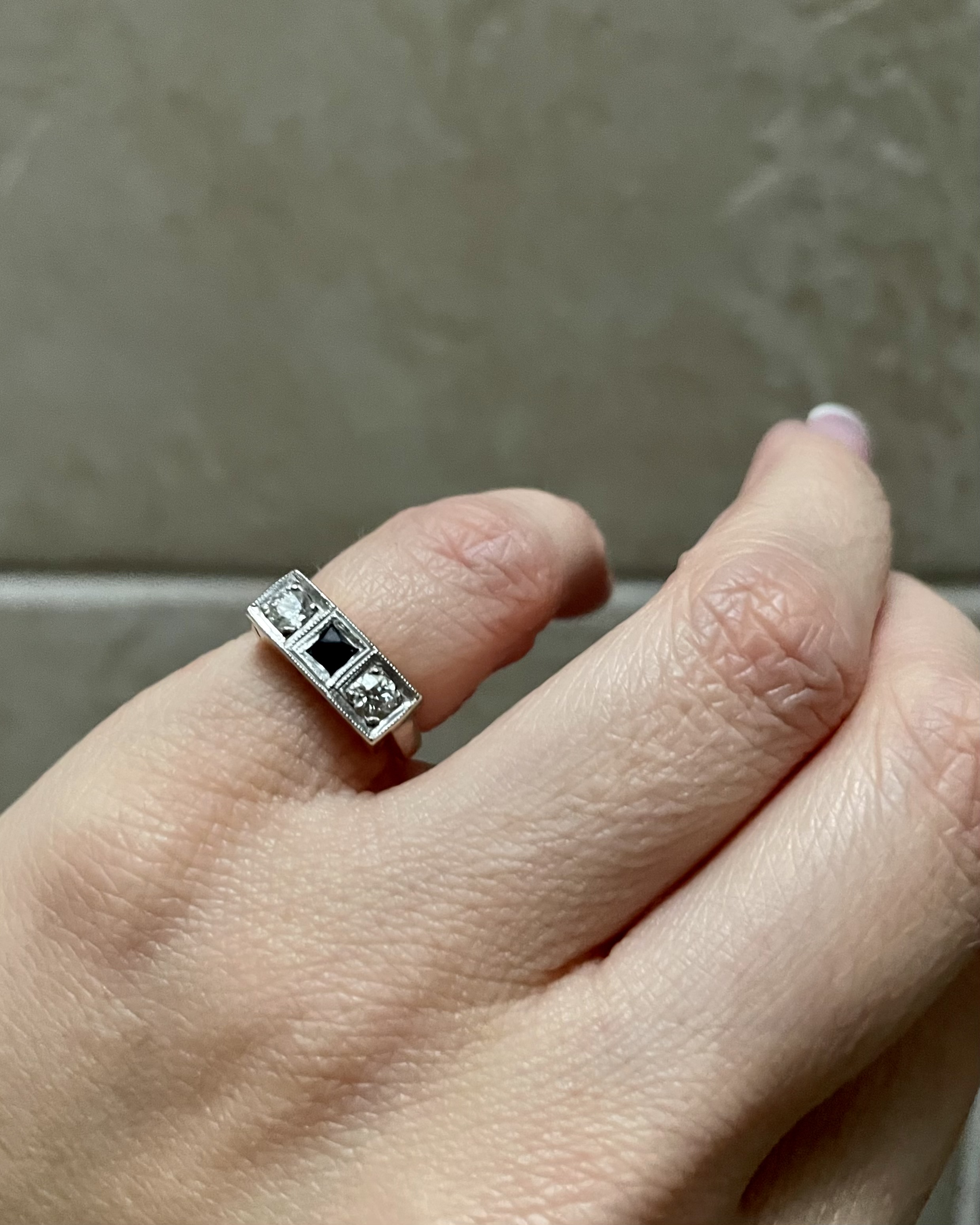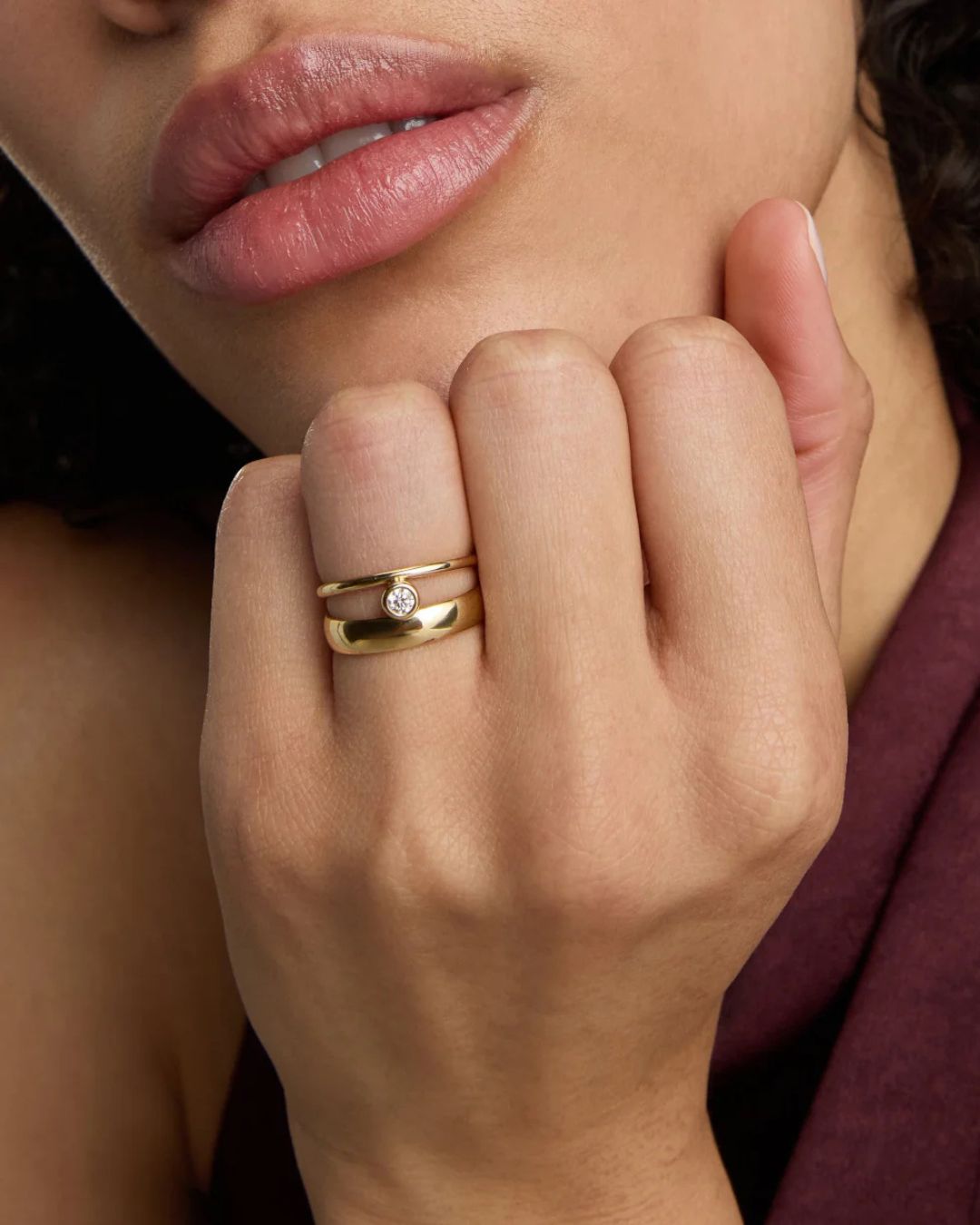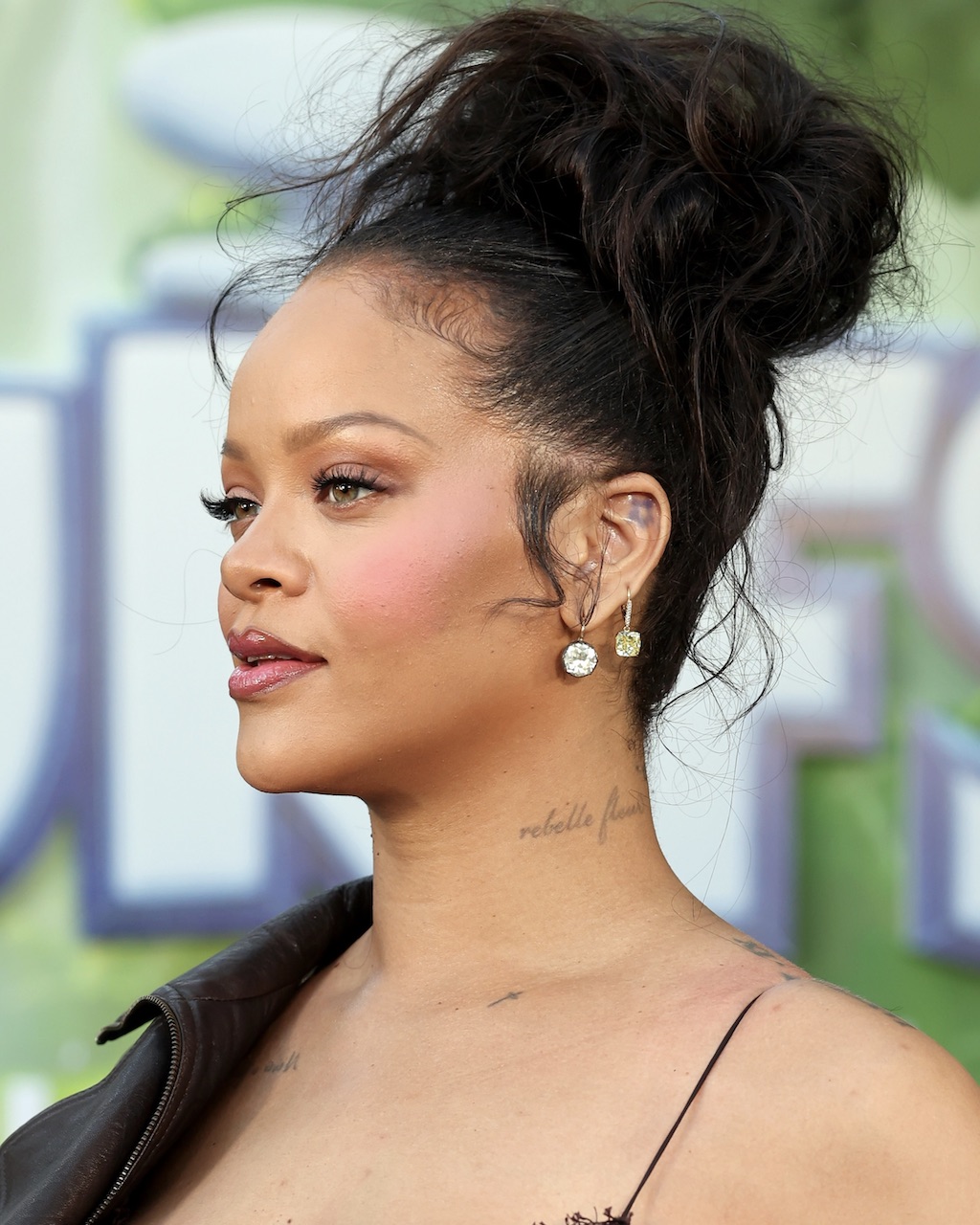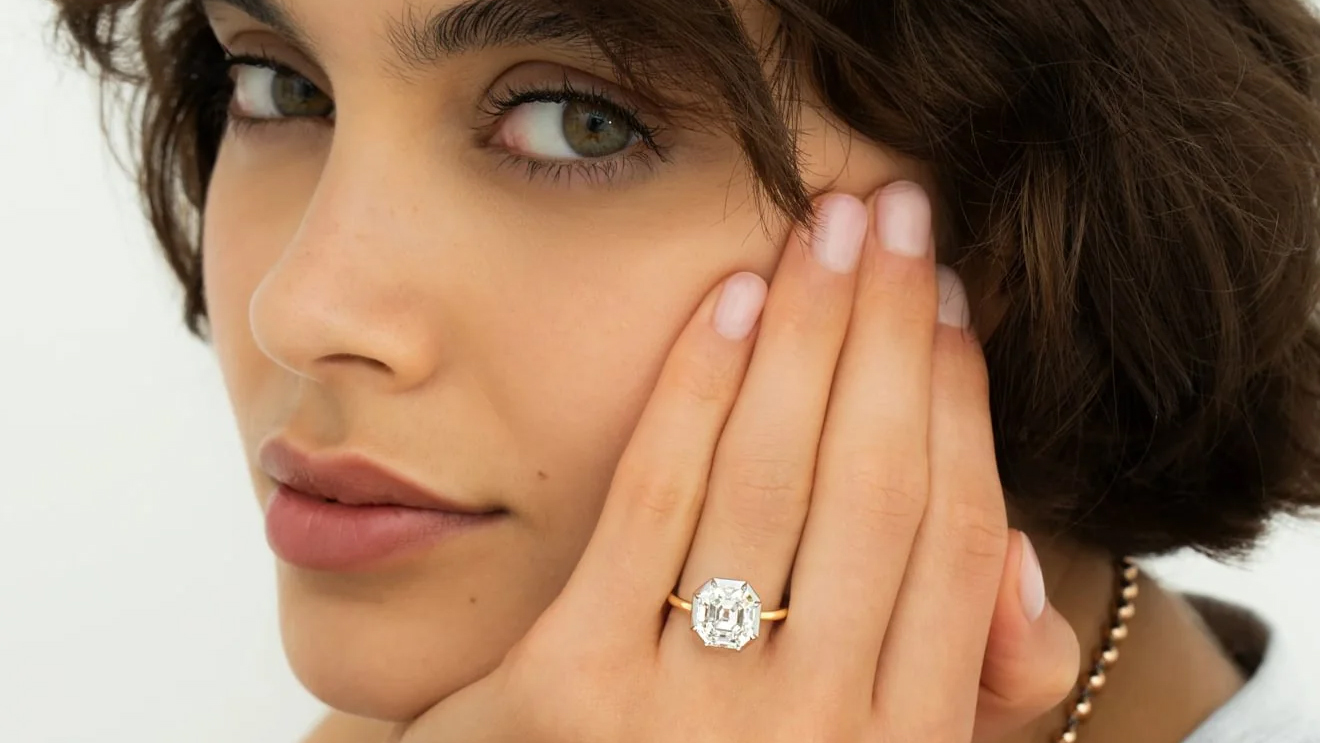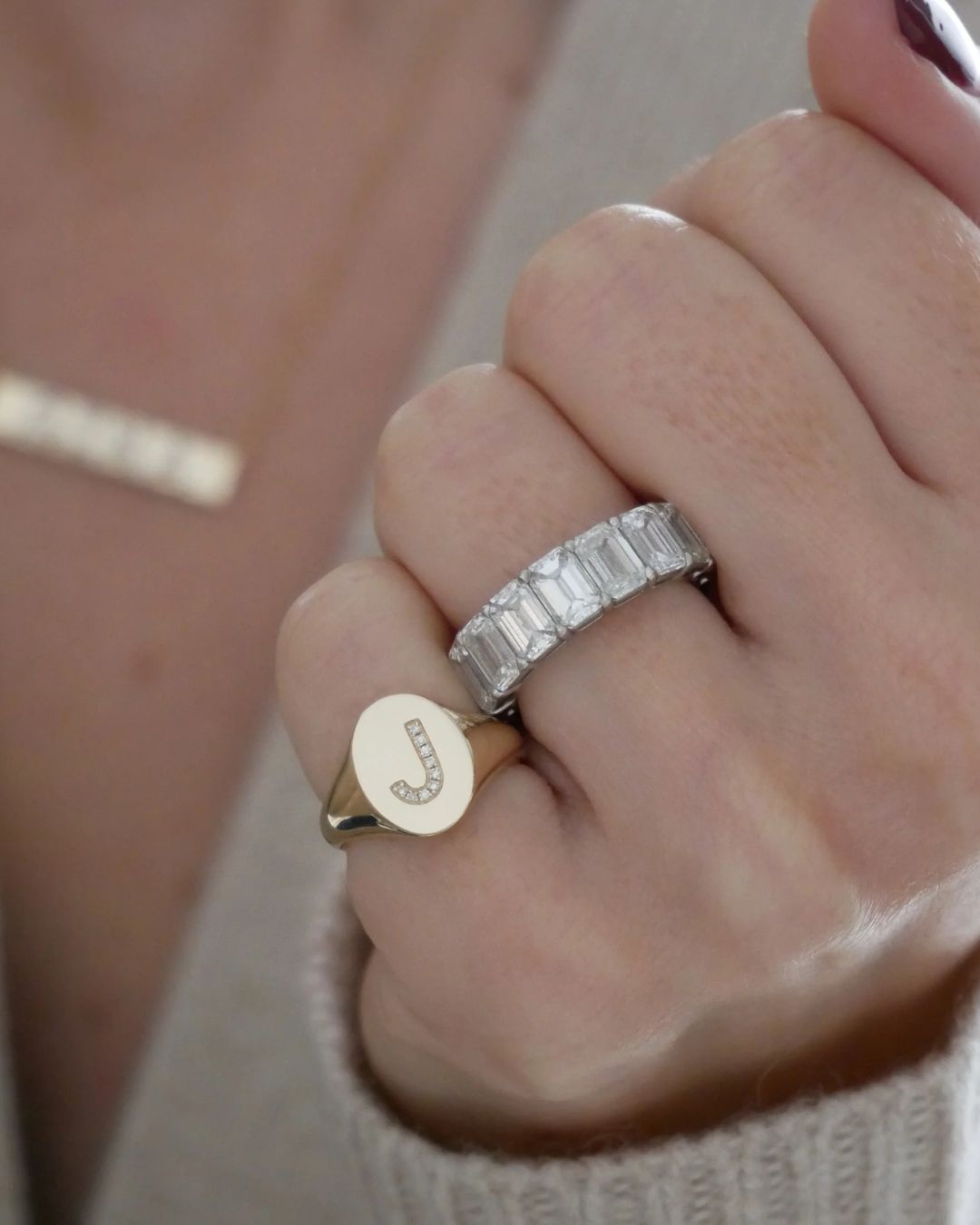< Historic Diamonds / Royal Stories
Empress Joséphine Bonaparte Was a Diamond Jewelry Trendsetter
Empress Joséphine Bonaparte had an undeniable impact on jewelry, igniting interest in the “toi et moi” engagement ring style and popularizing the tiara as we know it today.
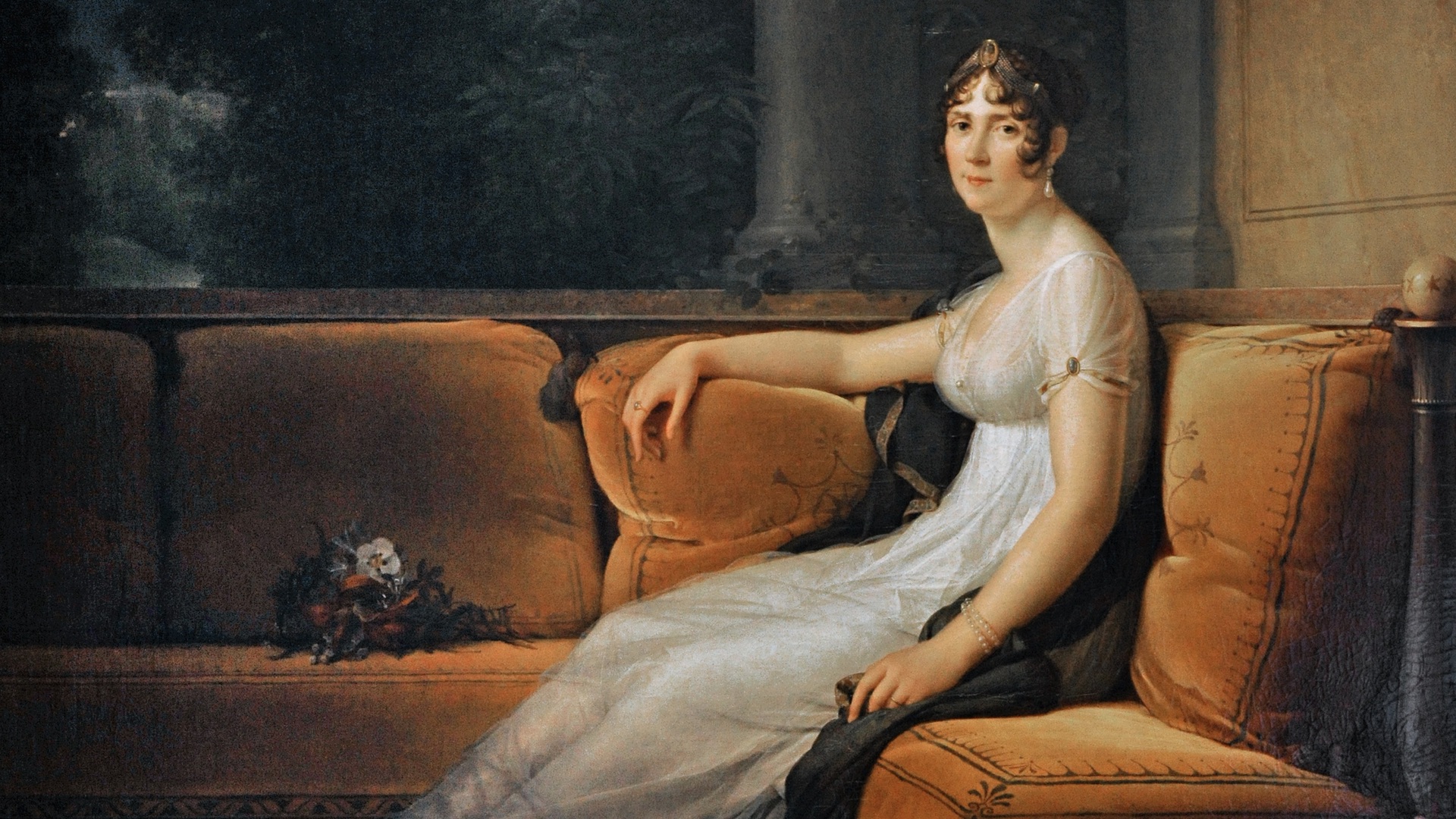
Josephine de Beauharnais, the first wife of Napoleon Bonaparte, Empress consort of the First French Empire. (Portrait by Francois Gerard, 1801. Oil on canvas. The State Hermitage Museum)
A tale filled with intrigue, scandal, and glittering natural diamond jewels, the tumultuous romance of French leader Napoleon Bonaparte and Empress Joséphine is a dramatic love story for the ages.
Marie-Josèphe-Rose Tascher de la Pagerie, best known as Empress Joséphine Bonaparte or Joséphine de Beauharnais, was an undisputed fashion icon of the early nineteenth century, spearheading many a trend, especially when it came to her natural diamond style choices. The high waistline of the empire silhouette as recently seen in Bridgerton, can be traced back to Joséphine as well as the ‘toi et moi’ engagement ring style. The empress has also been credited with popularizing the tiara as we know it today.
Ahead, discover her legacy of diamond jewelry, which continues to shape and inspire jewelry trends over 200 years later.
Meet the Author

- Hannah Militano covers diamond jewelry trends, the fashion industry, pop culture, and celebrity news.
- She holds a Bachelor’s degree from the Fashion Institute of Technology.
- As a journalist, her work has been featured in publications such as Editorialist, Carine Roitfeld’s CR Fashion Book, L’Officiel USA, Grazia USA, Coveteur, and more.
Who Is Empress Joséphine Bonaparte?
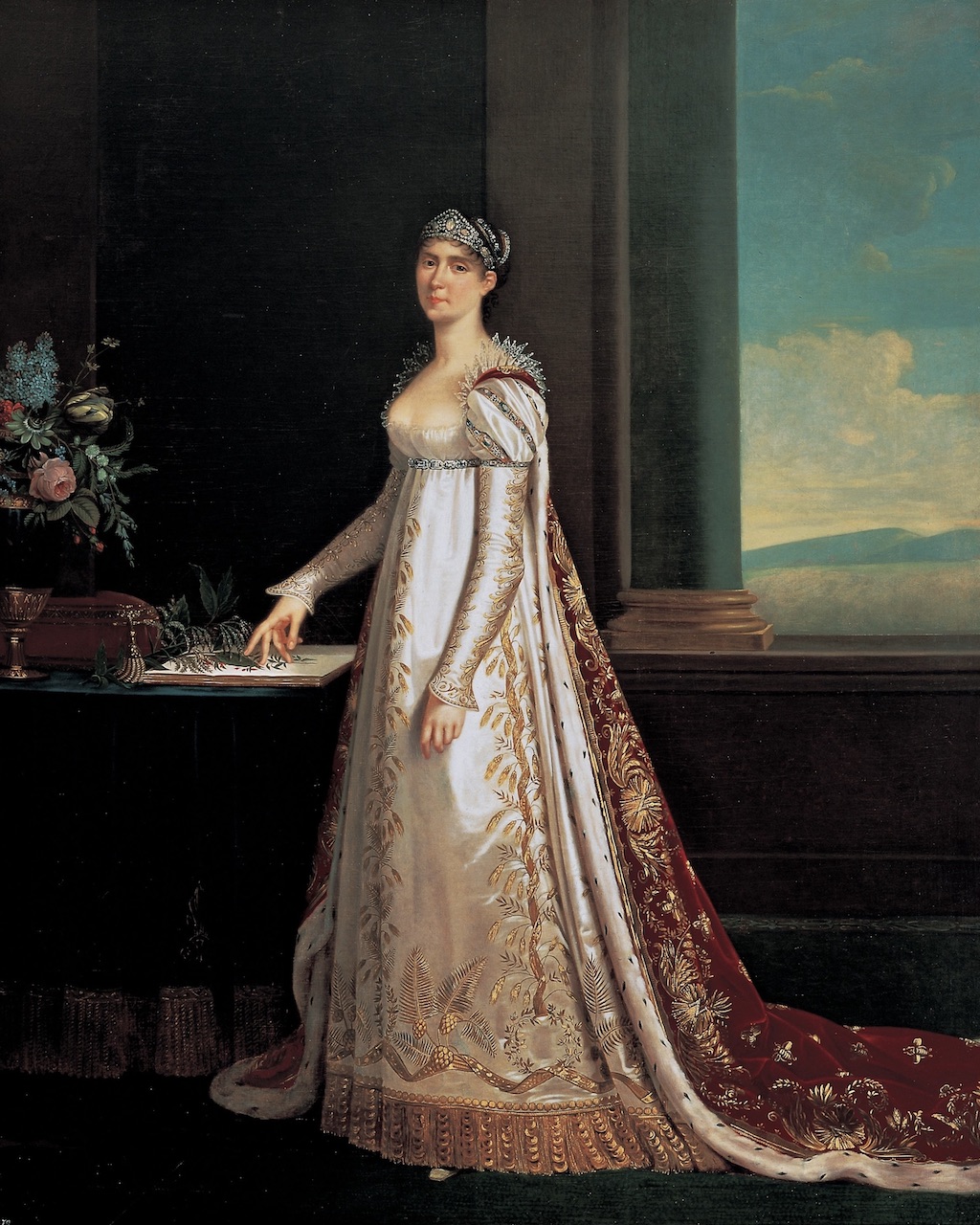

Born in the French region of Martinique in 1763 to a Creole family of planters. In 1779, she wed French general Alexandre de Beauharnais, with whom she had two children, Eugène and Hortense. Their turbulent marriage ultimately ended in separation, and during the French Revolution, both were imprisoned. Alexandre was guillotined in 1794 amid the Reign of Terror, while Joséphine narrowly escaped the same fate, released only after Robespierre’s downfall.
Left a widow and a single mother, Joséphine made it her mission to climb the social ladder as a courtesan, establishing political alliances with powerful members of the elite. It was here that she met the rising military general Napoleon Bonaparte, beginning a whirlwind romance. Five months of courtship and plenty of passionate love letters later, the couple married in 1796.
By 1810, the couple annulled their marriage due to Empress Josephine’s inability to provide the heir Napoleon so desperately desired. Yet, Joséphine’s children from her first marriage secured a dynastic legacy that far outshone Napoleon’s own. Her son, Eugène, married Princess Augusta of Bavaria and became Viceroy of Italy, while her daughter, Hortense, wed Napoleon’s brother, Louis Bonaparte, and briefly reigned as Queen of Holland. Their son would one day become Napoleon III, Emperor of the French. Beyond France, Joséphine’s descendants intermarried with Europe’s leading dynasties, making her a direct ancestor of the reigning monarchs of Belgium, Denmark, Luxembourg, Norway, and Sweden, as well as the former royal family of Greece.
Empress Joséphine Set The Trend for the Toi et Moi Engagement Ring
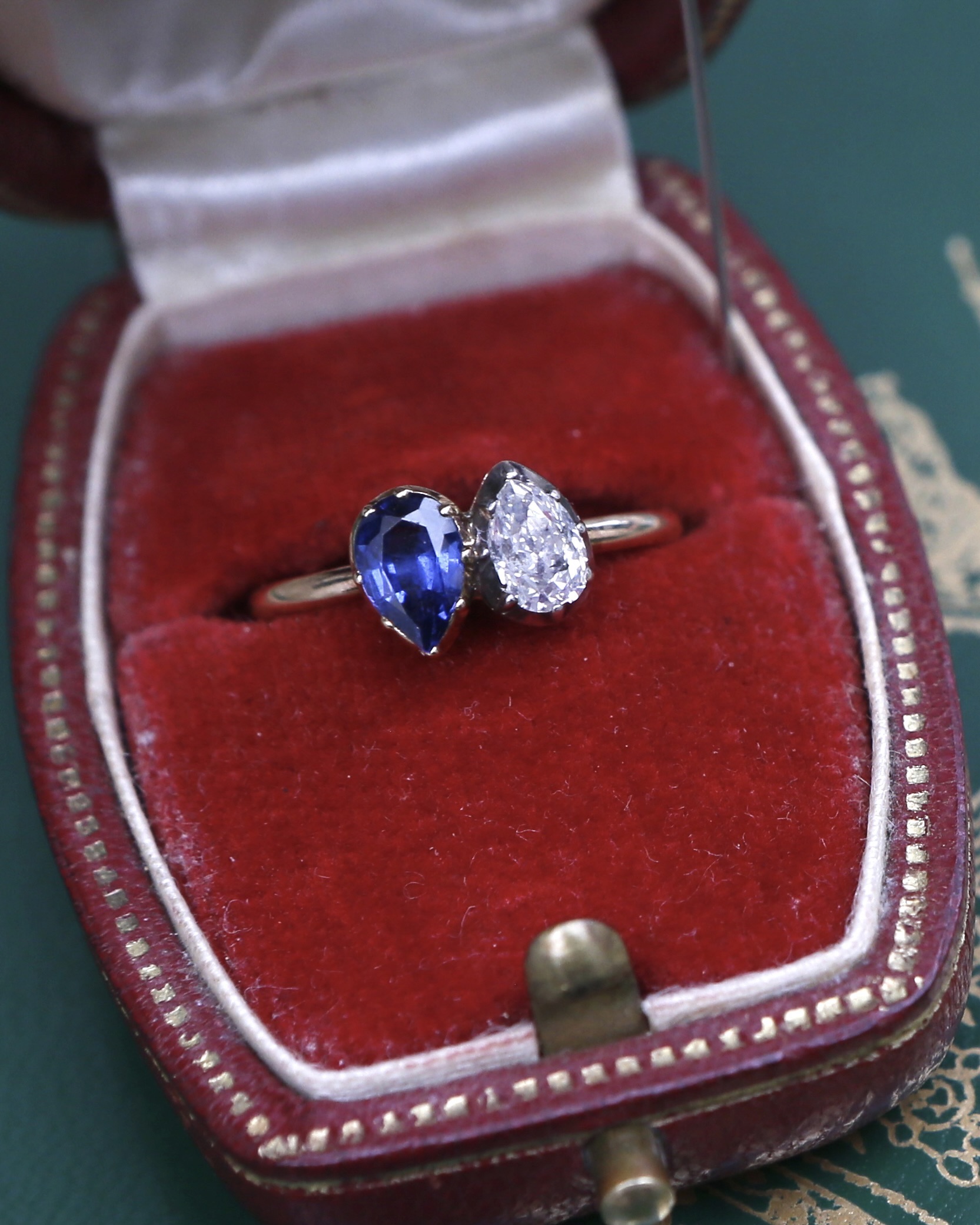

The ‘toi et moi’ engagement ring style can be traced back to an original natural diamond trendsetter, Empress Joséphine. Napoleon proposed to his first wife in 1796 with a ‘toi et moi’ engagement ring featuring two pear-shaped stones – a sapphire and a diamond, positioned side-by-side to represent the meeting of two lovers. The name itself even translates to “you and me.” This romantic engagement ring style has more recently been embraced by tastemakers like Jackie Kennedy, Emily Ratajkowski, and Megan Fox.
Joséphine passed down her iconic engagement ring to her daughter, and for two centuries, the ‘toi et moi’ ring remained within the Bonaparte family. In 2013, the ring was sold by French auction house Osenat at the “L’empire à Fontainebleau, les rendez-vous de l’histoire” auction and fetched nearly $950,000.
Empress Joséphine and the Diamond Tiara As We Know It Today
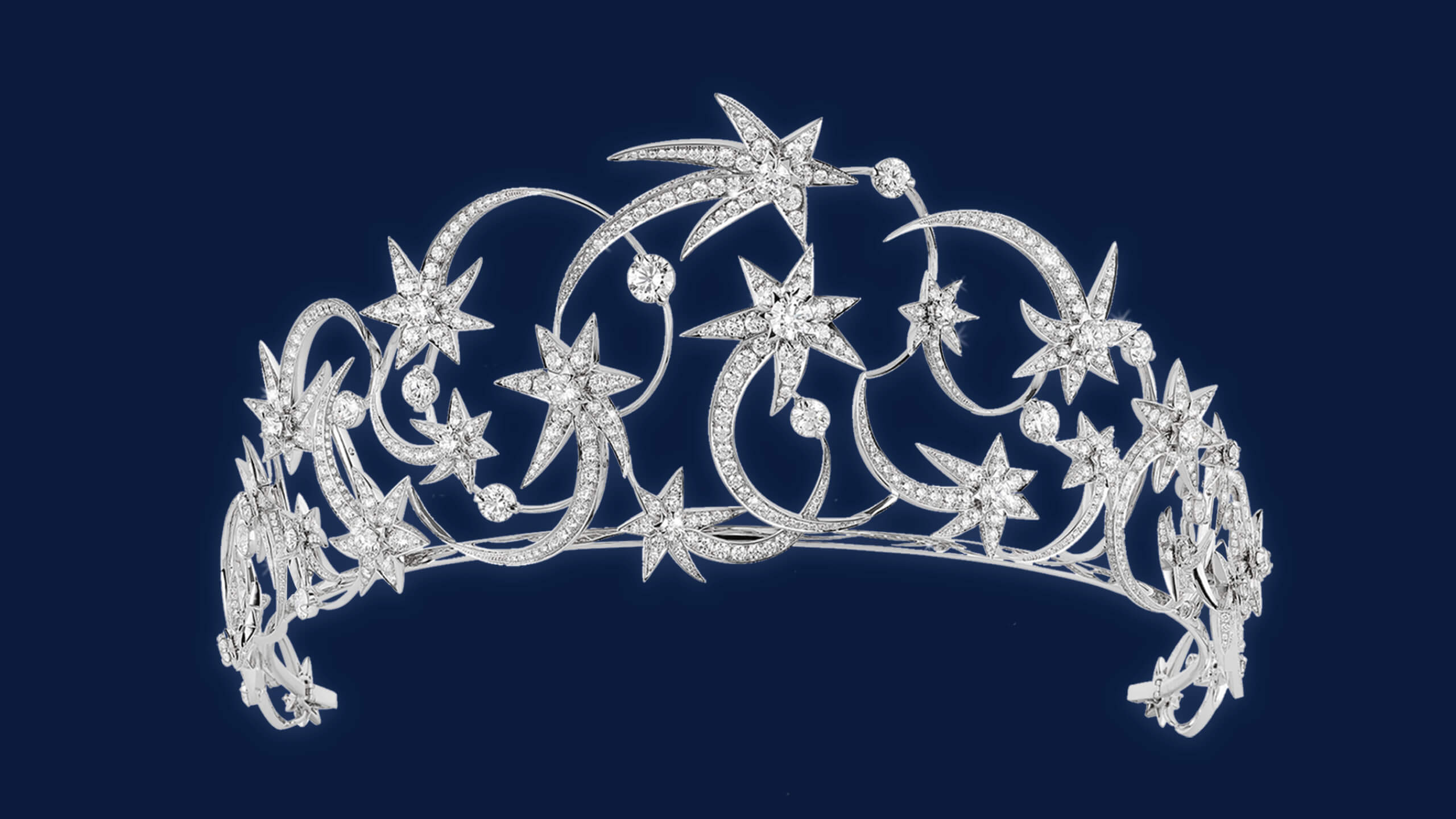
When Napoleon was crowned Emperor of France in 1804, Empress Joséphine wore a diamond tiara, an emblem of sovereignty and imperial grandeur that cemented the accessory as an essential element of courtly dress. Together, Napoleon and his empress commissioned jewelers to look to the classical world for inspiration, reviving the laurel wreaths of Ancient Greece and Rome in sparkling form with diamonds and other precious gemstones.
The lifeblood of the Regency era’s sartorial perspective, Joséphine quickly became a tastemaker and garnered a reputation as a lavish spender, splurging on extravagant jewels from her favored Maison Chaumet along with the latest fashions. To this day, the French jewelry Maison continues to draw inspiration from Empress Joséphine as its first great client.
Even Chaumet’s high jewelry collection, Les Ciels de Chaumet and the Étoiles, Étoiles Tiara is designed with swirls of diamond shooting stars, referencing Napoleon’s loving nickname for the woman he believed to be his lucky star, ”mon étoile.”
To mark the bicentenary of Napoleon’s death in 2021, Chaumet celebrated the captivating couple in the exhibition, Joséphine et Napoléon, une histoire (extra)ordinaire, featuring 150 pieces of jewelry, works of art, correspondence, and more shared between the lovers.
Tracing The Coronation Tiara from Empress Joséphine to Grace Kelly
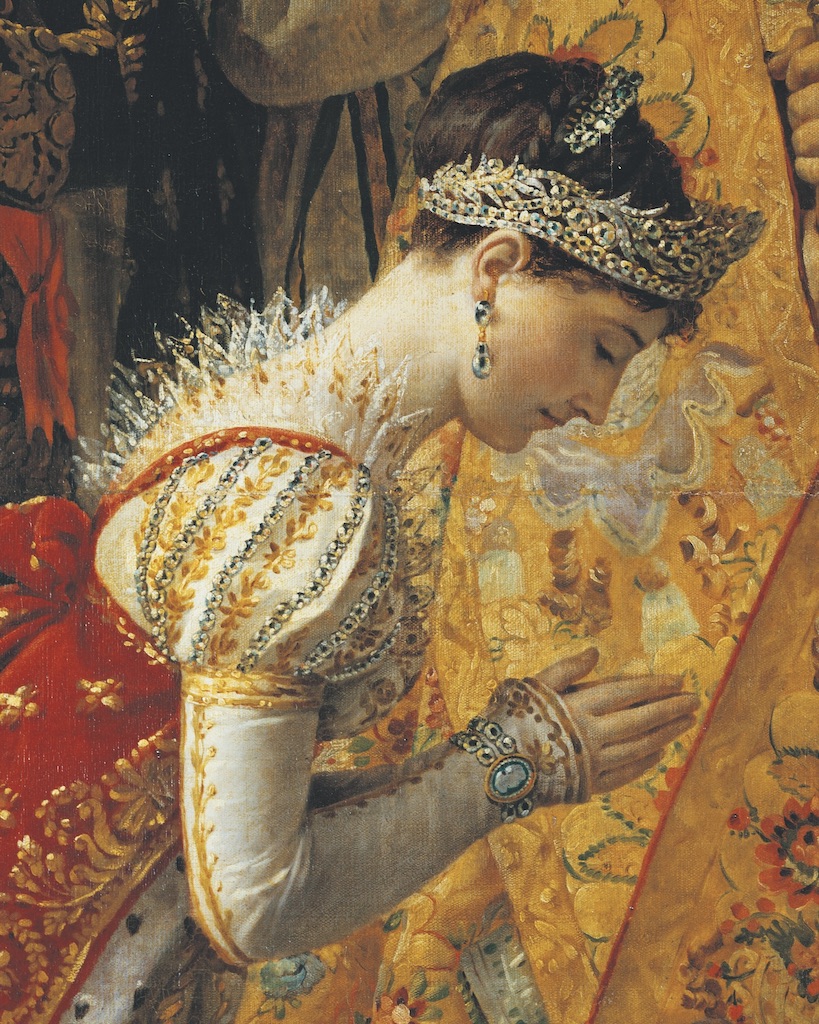
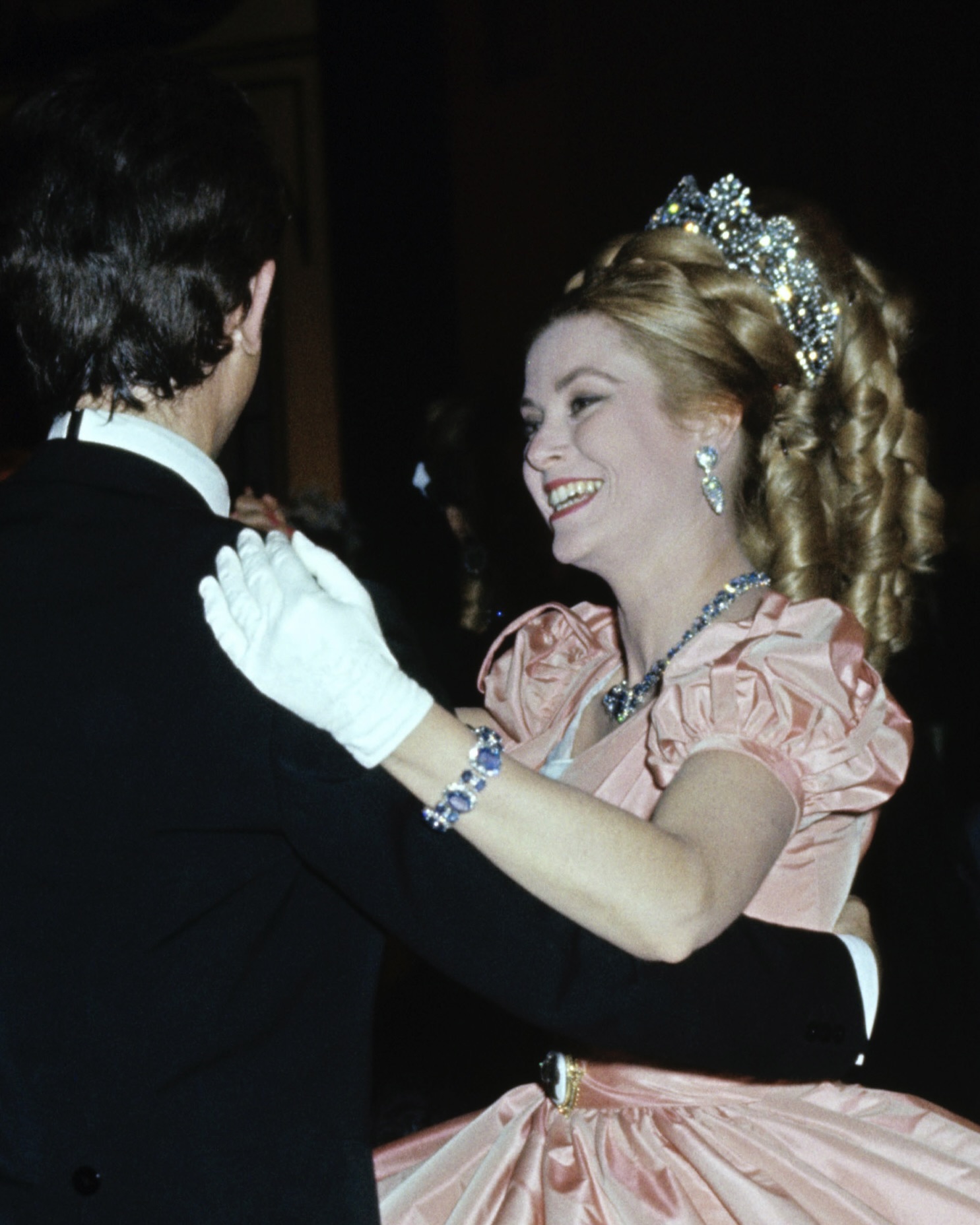
For Napoleon’s coronation at Notre-Dame Cathedral in Paris on December 2, 1804, Joséphine wore a magnificent custom-made diamond tiara, said to be set with more than 1,040 diamonds. Considered one of her most treasured jewels, the piece was later inherited by her daughter, Queen Hortense, and remained within the French Crown Jewels until 1887, when the French Republic dispersed the collection and sold at least part of the tiara to the luxury jeweler Van Cleef & Arpels.
After acquiring the historic jewel, Van Cleef & Arpels refurbished the tiara and occasionally loaned it to modern royals. Its most famous appearance took place in May 1966, when Grace Kelly Princess of Monaco, who wore the tiara for the opulent ‘Second Empire’ Ball. Hosted in Paris to celebrate the opulence and artistry of Napoleon III’s era, the ball revived the grandeur of 19th-century court life.
A Replica of Empress Joséphine’s Fabergé Diamond Tiara Starred in The Gilded Age
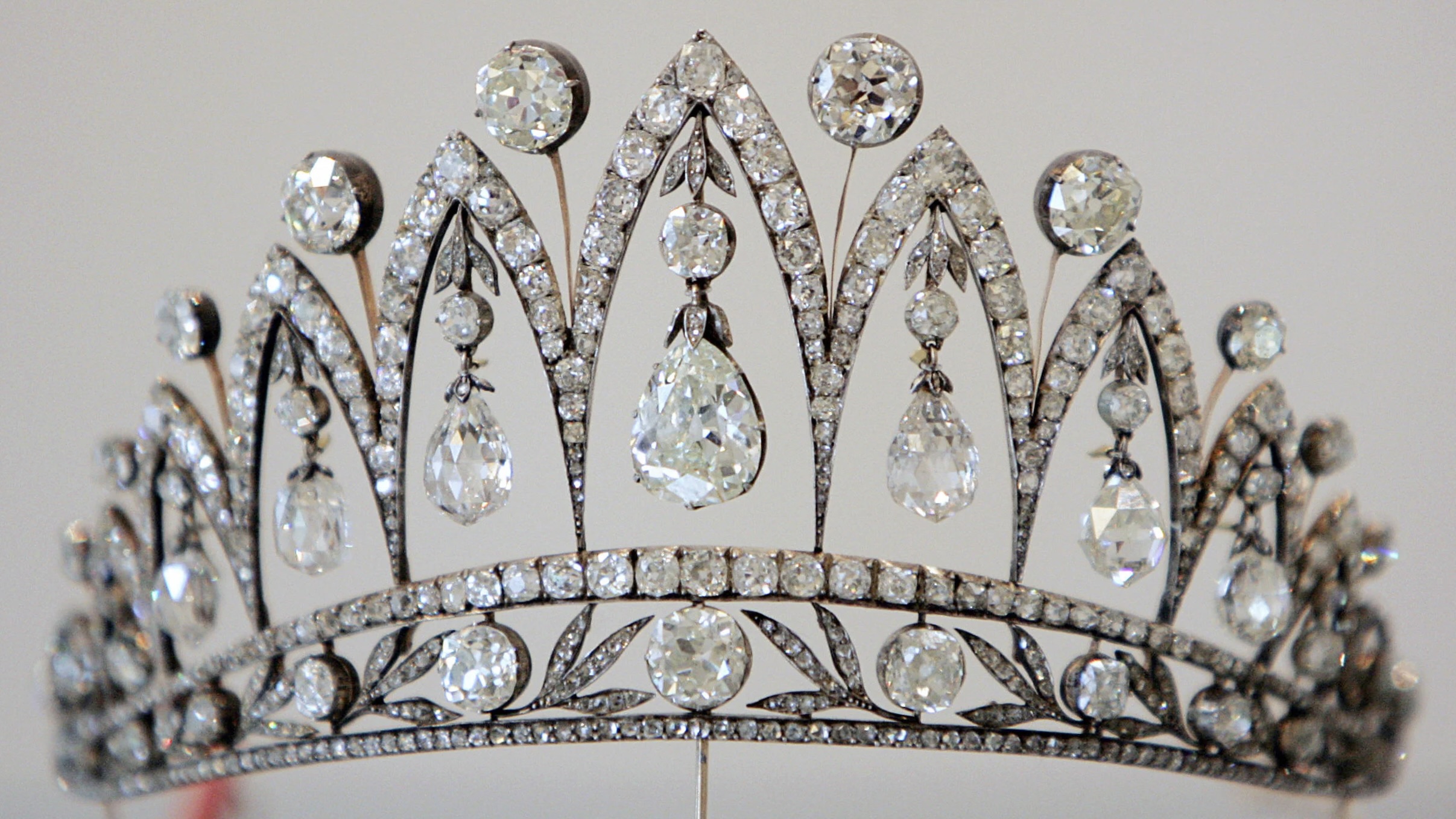
In HBO’s hit period drama, The Gilded Age, historically inspired diamond jewelry shines brightest. At the close of season 2, Mrs. Bertha Russell attends the opening of the controversial Metropolitan Opera House, wearing a recreation of a diamond Fabergé tiara, originally given to Empress Joséphine by the Tsar of Russia. The dazzling headpiece underscores both Bertha’s social ambitions and the enduring influence of Joséphine’s legendary jewelry.
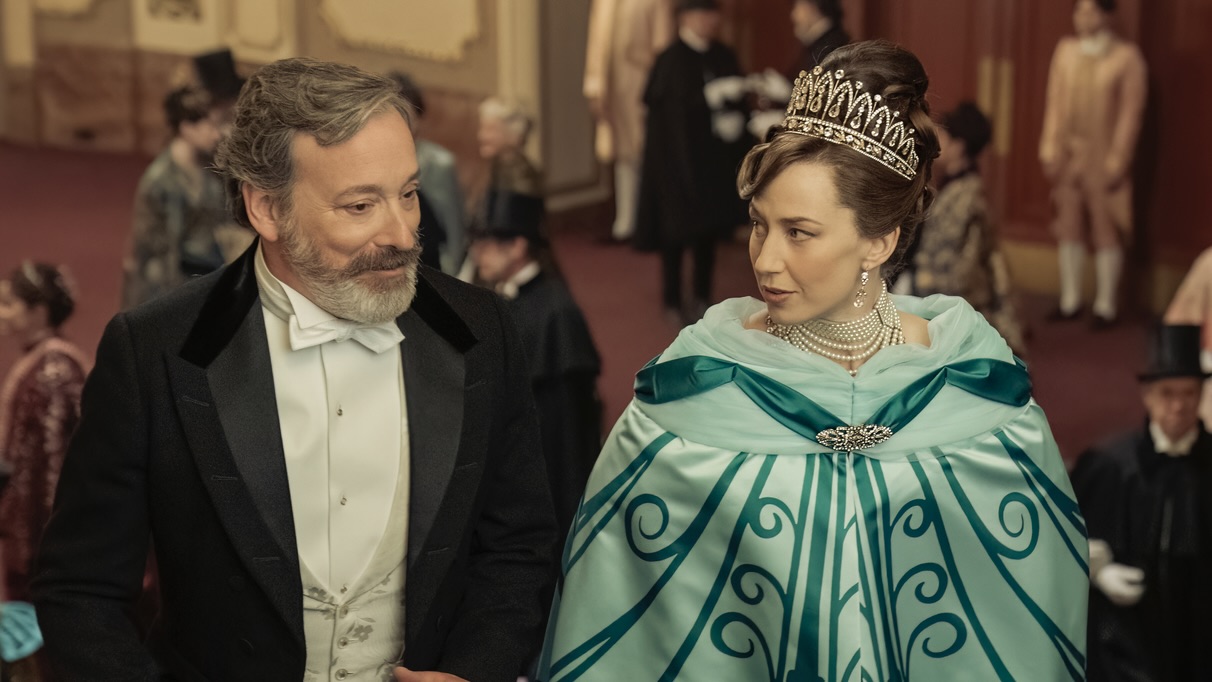
Known as the Empress Josephine Tiara, its briolette-cut (drop-shaped) diamonds were a gift from Emperor Alexander I of Russia to the Empress Josephine following her divorce from Napoleon. The stones were later inherited by her grandson, Prince Maximilian Joseph, and, according to Fabergé, a subsequent owner had them mounted into the tiara. The jewel eventually entered the Belgian royal family before passing to Queen Maria José, the last Queen of Italy. In 2007, the historic piece was auctioned at Christie’s in London and today resides in the McFerrin Collection, on display at the Houston Museum of Natural Science in Texas.
Vanessa Kirby Brought Empress Joséphine’s Opulent Style to the Big Screen
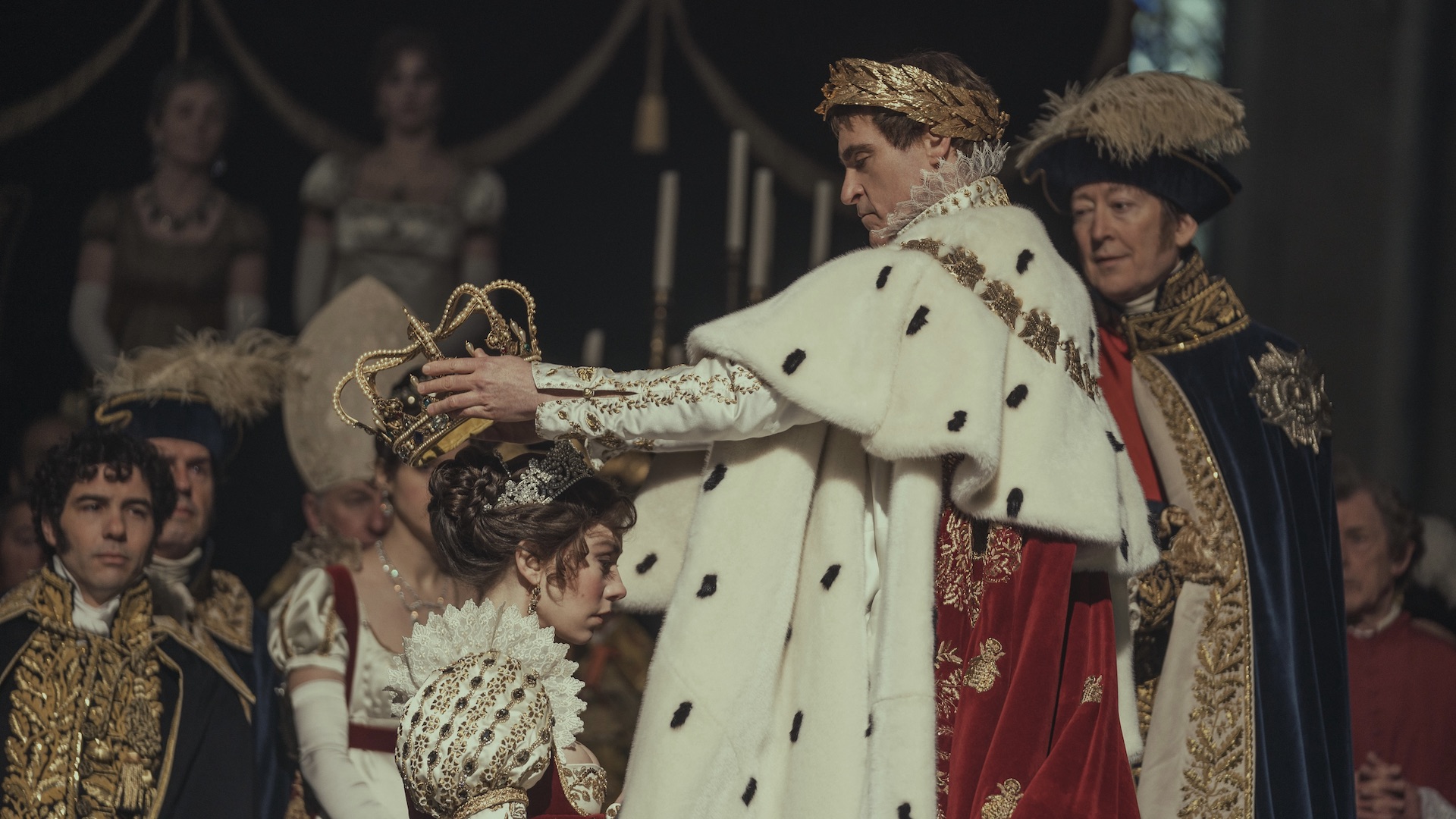
Further immortalized on screen, Academy Award–winning actor Joaquin Phoenix stepped into the role of Napoleon in Ridley Scott’s 2023 epic Napoleon, opposite The Crown’s Vanessa Kirby, who brought fresh depth and brilliance to the role of Joséphine de Beauharnais. Her performance highlighted not only the Empress’s complexity as a historical figure but also her enduring aura of style and influence.
To capture the grandeur of the Napoleonic court, costume designer Janty Yates enlisted longtime collaborator David Crossman, whose expertise in military dress guided the creation of thousands of uniforms, aristocratic gowns, and regal ensembles. With more than 80 craftspeople in the costume department and additional artisans across the globe weaving fabrics, hand-embroidering details, and recreating jewelry, Joséphine’s world of opulence—and her celebrated taste for diamonds—was vividly brought to life for modern audiences.
